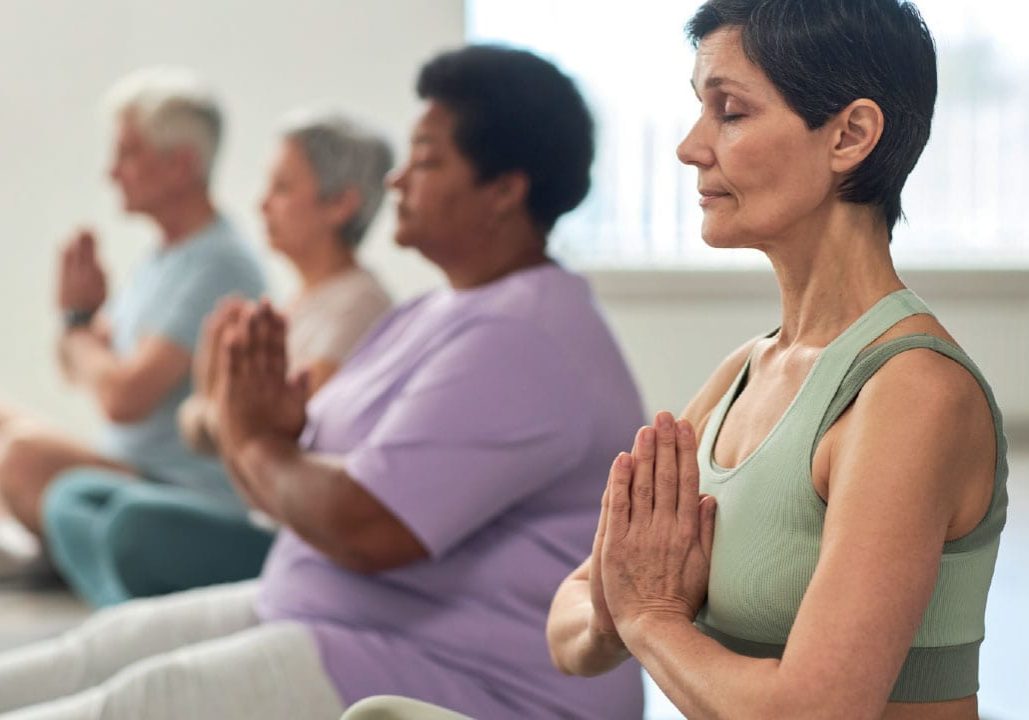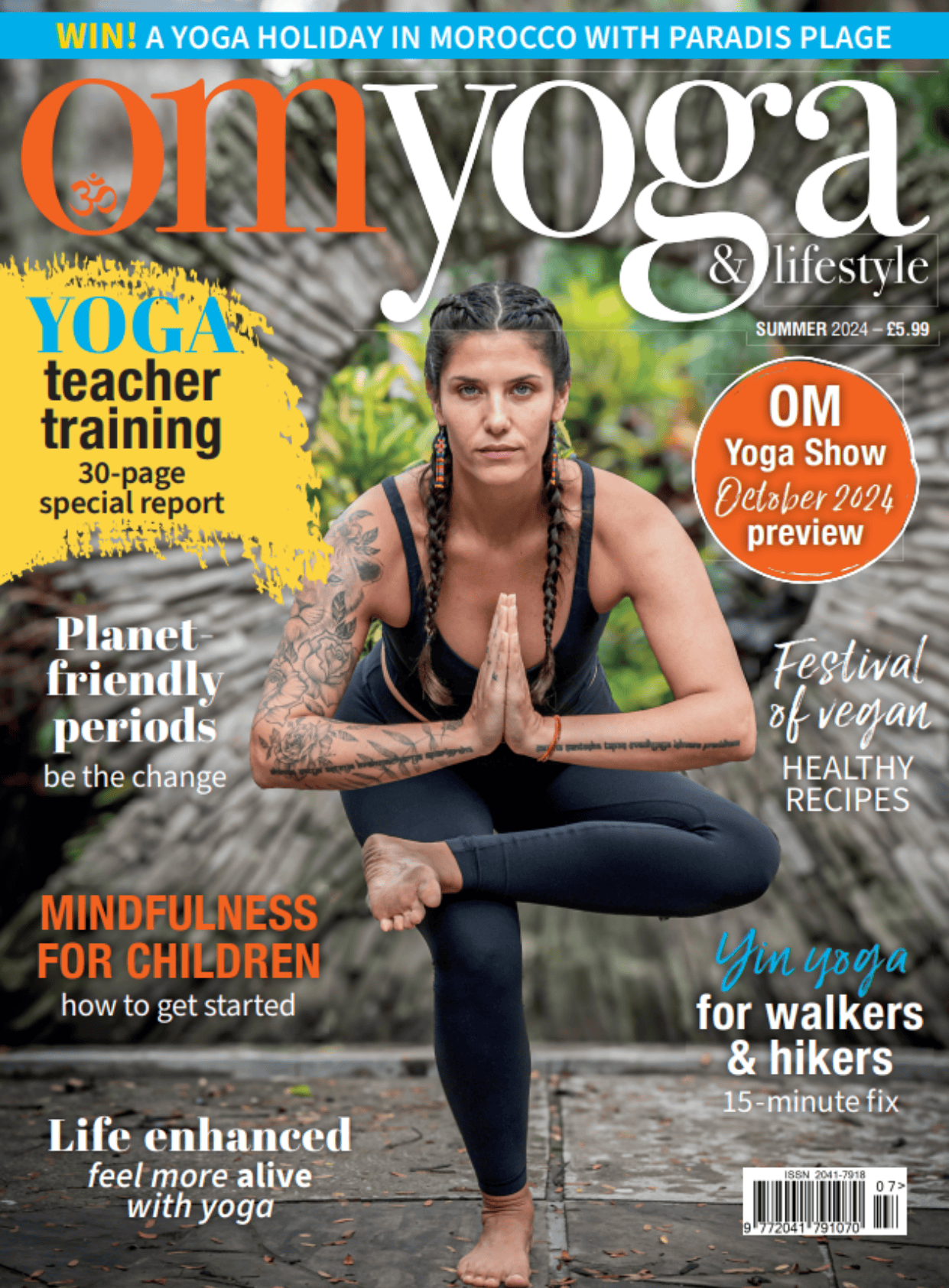
Growing with a Yoga Flow
Notes to deepen your practice. By Rola Tassabehji
Reading time: 4 minutes
While most of us start practicing yoga to look and feel good in our physical body and emotional state, more people are discovering that there is so much more to using the practice as a framework for how to live in the world and be a part of the larger global community.
As Amina J. Mohammed, deputy secretary-general of the United Nations, stated on International Day of Yoga in 2021: “Yoga also has the potential to connect people from different cultures and advance our shared global values of peace, tolerance and solidarity.”
With so many wars and conflicts around the world, perhaps it is time to revisit the real meaning of yoga and its potential as a tool for personal — as well as social — transformation. Based on my yoga journey as a 55-year-old yoga student and teacher, with multiple life transitions and cross- cultural experiences as a Lebanese-born European, here are a few ways that can help lead the way.
Find your yoga
Tracing yoga’s complex trajectory to modern times provides evidence that there is no one ‘true’ yoga. By abandoning the notion of one authentic or pure yoga and not following any lineage, guru, or style, give yourself permission to experiment with different yoga tools and styles. Movement and a vigorous practice might work for some, but a quieter, more meditation-focused practice might be better suited for others. While there are many paths in yoga, the end destination is the same, namely, finding the true self through greater self-awareness. The practice is a journey where the different elements eventually meet. Instead of asking whether or not the yoga style you resonate with is authentic, ask if it is making you more authentic, more connected with yourself.
Explore the higher benefits of the practice
Science confirms the physical benefits of yoga as a fitness routine. Yet, its therapeutic and spiritual benefits, including its ability to create compassionate self-awareness, can be transformational. Mental health issues in particular are often complicated, and recovery is generally slow, or non-linear, perhaps requiring a great deal of self-introspection and vulnerability. Yoga alone may not be the answer for more serious cases of mental health. But everyone suffers from emotional health issues at some stage and asanas, or physical postures, combined with mindful movement of breath, can invite introspection, tapping into the deeper benefits of yoga for when times get tough. Whether practiced online or at in-person class, with a meditation or movement-based focus, the essential elements of this ancient practice remain an inexpensive, safe and potentially beneficial approach to complement a Western medical treatment plan (including Cognitive Behavioural Therapy), particularly for a generation of young adults struggling with social expectations, economic pressures and a public health crisis.
“Let the guests come and go”
In Bringing Yoga to Life: The Everyday Practice of Enlightened Living, yoga teacher and author Donna Farhi encourages practitioners to observe thoughts and sensations as ‘temporary guests’. She adds: “We don’t invite, and we don’t refuse. We don’t suppress, and we don’t indulge. We just let these guests come and go.” The famous Vietnamese monk, Thich Nhat Hanh, expresses something similar in The Art of Power: “To dwell in the here and now does not mean you never think about the past or responsibly plan for the future. The idea is simply not to allow yourself to get lost in regrets about the past or worries about the future. If you are firmly grounded in the present moment, the past can be an object of inquiry, the object of your mindfulness and concentration. You can attain many insights by looking into the past. But you are still grounded in the present moment.”
Accept the mystery
Science is catching up with the physical and mental benefits of a consistent yoga practice. But some of the concepts like prana (life energy) remain difficult to prove in scientific terms. For most dedicated yoga practitioners, these concepts are intended to be experienced, and scientific evidence is not seen as necessary to prove what they experience. This in no way demeans the practice. Famous yoga teacher Jason Crandell describes the importance of the mystery and self-exploration in yoga. “I want my students to be really curious about who they are and to be accepting of whoever that may be on a particular day. I want them to see that everything inside and outside is incredibly mysterious. I want them to use the practice to just check in, see what’s unfolding, and learn to deal with it skillfully.”
Widen your perception of gender
By definition, yoga is about joining together: mind and body, the emotional and the physical. Move away from binary labels and gendered pronouns and terms (personally, I try to avoid the term yoginis), and recognise that, on and off the mat, male and female identities, similar to the ancient Chinese concepts of yin and yang, exist on a spectrum. On any given day, a student or teacher can bring on a variety of yin and yang energies, alternating between different forms of yoga and different postures — some emphasising strength and a dynamic practice, others flexibility and a more restorative practice. The key is to eventually flow through a class toward a more balanced state.
Look for beauty without the mirrors
Throughout the years of training, I noticed that while many yoga studios have mirrors, all of my yoga training has been in rooms when there were none. One of my best yoga experiences was in Mysore, India in a very basic room on the rooftop of an old building. Looking back now at my picture, taken just after a yoga class at five in the morning, drenched in sweat with unruly hair, made me realise how a genuine smile, a sense of wholeness, a good yoga friend by my side, can bring out real beauty. As Khalil Gibran said: “Beauty is not in the face; beauty is a light in the heart.”
Recognise, and accept, impermanence
The concept of impermanence, or the uncertain and temporary nature of reality, is one of the main pillars of Buddhism, considered the sister tradition of yoga. According to Buddhism, accepting impermanence can also be “liberating because it opens us up to a world of endless possibilities.” For one, it is a reminder of the need to appreciate and practice gratitude for the present moment, considered the highest form of yoga. Experienced yoga practitioners apply this concept in various other ways, including accepting changes in their bodies. While a handstand might be accessible today, the body might feel different tomorrow and may need to rest from too much strain on the wrists. Eventually, a more gentle physical practice will evolve to cater to more sensitive joints. If done in the right spirit, the realisation of impermanence and loss can make every yoga practice, and moment, a celebration of what the body can do today because nothing lasts.
Respect cultural sensitivities
For many yoga teachers and thought leaders in India and in the West, yoga has been appropriated by a Western capitalist paradigm. As a practitioner, familiarise yourself with the context and some of the sacred rituals and symbols, while avoiding getting caught up in the buying and selling of yoga products and commodities.
Make it a habit
Aristotle famously said: “We are what we repeatedly do. Excellence, then, is not an act, but a habit.” In yoga, a key measure for success both on and off the mat is applying tapa or discipline. Practicing with disciplined regularity got me unexpectedly to stand on my hands at age 50. It also led me to injury, and to realising that discipline has to be balanced with self-compassion. Listening to your body is a way of applying the highest form of ahimsa, an unconditional non-harming attitude to yourself.
Leverage the power of community
While a yoga practice, including reaching a meditative state, is deeply personal, the idea of sangha or community is an essential element. As was apparent during Covid-19 lockdowns, moving or meditating in synchronicity with others, even through a computer screen, helps build a sense of community that can encourage mental wellbeing. When practicing alone, yoga offers an opportunity to cultivate a sense of connection with others who have similar values. Off the mat, the yoga community shares a spirit of non-harming, avoiding gossip, and living in the present moment. And when you are present with your friends, listening without judgement or trying to fix or correct, a deeper connection emerges.
Excerpts from the book Growing With A Yoga Flow: Notes To Deepen Your Practice by Rola Tessabehji, published by Book Baby and available for purchase at: yogawithrola.com/ growing-with-a-yoga-flow-book/


